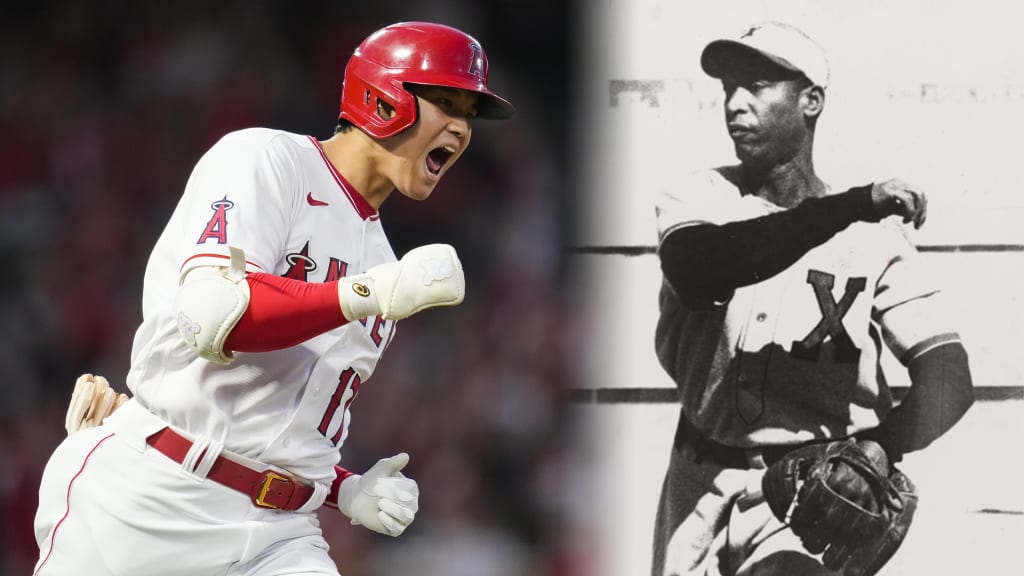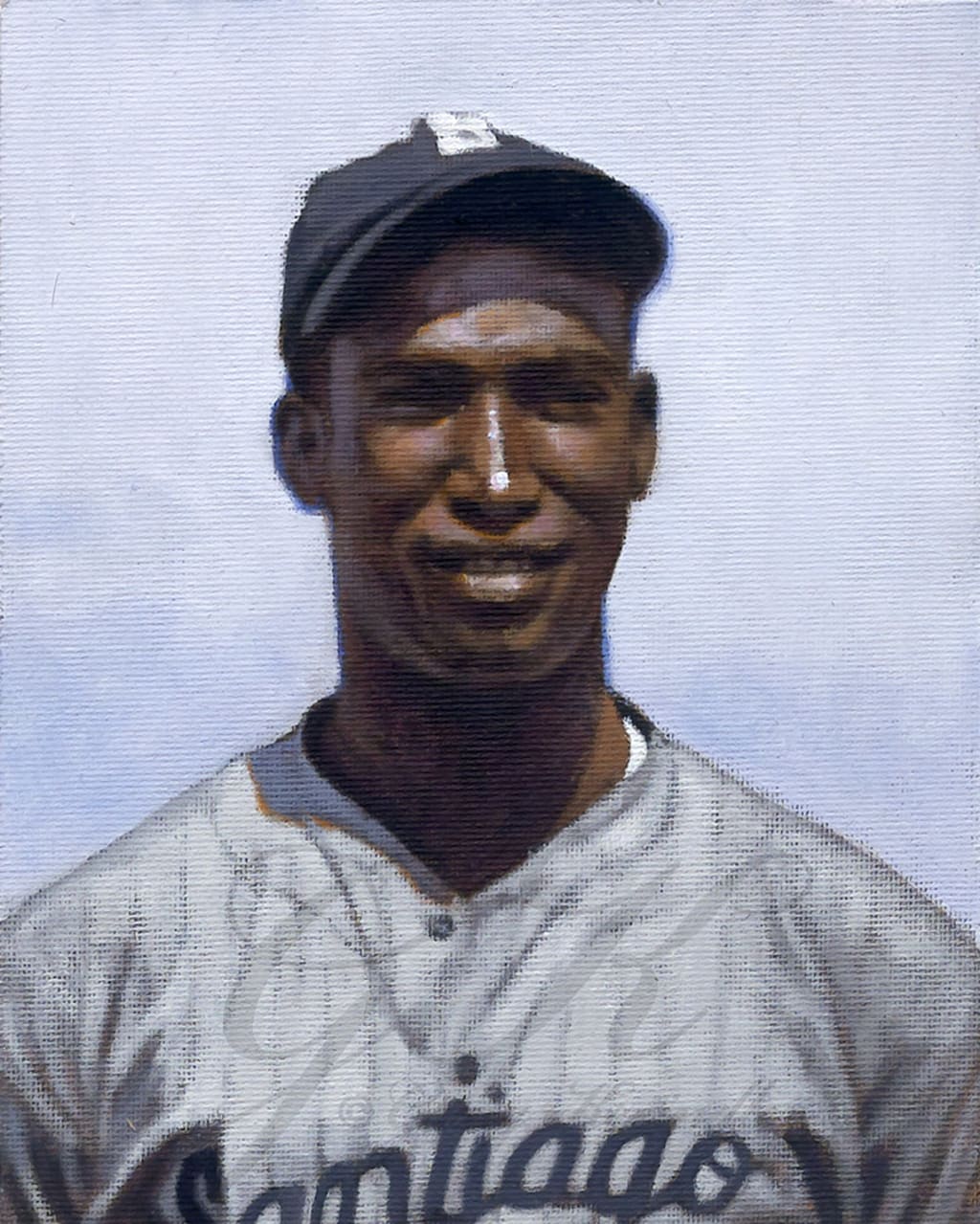
The fans selected Shohei Ohtani as the American League’s starting designated hitter in the Midsummer Classic. The players selected him as one of the five starting pitchers on the AL roster. And so, on July 13 at Colorado’s Coors Field, Ohtani will make history as the first player to pull double duty in the All-Star Game.
Sort of.
Ohtani’s upcoming two-way showcase on baseball’s biggest midseason stage will undoubtedly be a first in the MLB-sanctioned All-Star Game, an event that dates back to 1933. But as we’ve discussed in this space, MLB’s recent embrace of the Negro Leagues as Major Leagues ought to compel us to consider the great two-way athletes who never got the opportunity to play in the American or National Leagues because of the color of their skin.
Three players in the National Baseball Hall of Fame -- “Bullet Joe” Rogan, Martín Dihigo and Leon Day -- were legit two-way players in the Negro Leagues, and one of them was respected enough as both an outfielder and a pitcher to serve in both roles in a single Negro League showcase.
On Aug. 11, 1935, the annual East-West Game -- the Negro Leagues' answer to the All-Star Game -- was held at Chicago’s Comiskey Park.
Dihigo began the game as the East’s starting center fielder. He ended it on the mound.
It's difficult to contextualize a player like Dihigo today. Because even now, in the time of Ohtani and with teams grooming players to be as versatile as possible, there is nobody like him. Seamheads’ database credits Dihigo, who played from 1922 to 1945, with at least 235 innings apiece at first base, second base, shortstop, third base, left field, center field and right field, as well as 459 1/3 innings as a pitcher (plus another 973 2/3 innings pitched in the Caribbean and Mexican Winter Leagues). He even played six innings as a catcher in 1929 just to say he touched ‘em all.
“I’m not sure there’s another player in history that matches Dihigo’s versatility,” said Bob Kendrick, president of the Negro Leagues Baseball Museum in Kansas City. “He played every position and played them all well. He was extraordinary.”
That extraordinary skillset made the Cuban-born Dihigo, who was known as “El Maestro” (“The Master”), the only player to be elected a Hall of Famer in five countries -- Cuba, the Dominican Republic, Venezuela, Mexico and the United States.
It also made him the East’s leading fan vote-getter in advance of the 1935 East-West Game.
So when the day arrived, there was Dihigo, batting third and playing center in the East’s starting lineup for that star-studded affair, played before a crowd of about 30,000. At that time, due to the poor economic conditions, there was no Negro League World Series. The East-West Game, therefore, was the most anticipated matchup on the schedule. Counting Dihigo, there were 13 future Hall of Famers on the field that day, including Day (who pitched but did not play in the field in the game), Mule Suttles, Josh Gibson, Oscar Charleston, Turkey Stearnes, Cool Papa Bell, Buck Leonard, Jud Wilson, Ray Brown, Ray Dandridge, Biz Mackey and Willie Wells.
A tall, handsome switch-hitter, Dihigo came up in the top of the first with two on and, per the box score available at Retrosheet, ripped a base hit to center field to score Jake Stephens with the game’s first run. Later, in the fifth, he reached on an error and scored to give the East a 4-1 lead.

The West, though, wound up tying the tilt with two runs off Day in the sixth and another in the seventh. The game drifted into extras, where it got wild. Each team scored four runs in the 10th, with Luis Tiant Sr. (yes, the father of the future three-time All-Star Luis Tiant) unable to preserve the East’s 8-4 advantage.
That’s how it fell to Dihigo, who had played the entire game despite crashing into the center-field wall in pursuit of a fly ball, to pitch the 11th.
After the East stranded a runner to keep it knotted at 8, Dihigo replaced Tiant in what turned out to be a dramatic final frame. Dihigo made the regrettable mistake of walking leadoff man Bell, the famously fleet-footed center fielder who a year earlier had scored the East-West Game’s only run by streaking home all the way from second on an infield hit. But after Bell advanced to second on a sacrifice bunt, Dihigo managed to strike out Chester Williams for the second out of the inning.
That’s where things got really interesting. As described in a fun Society for American Baseball Research piece by Frank Amoroso, Josh Gibson was due up, with Suttles on deck. Suttles had relief pitcher Sug Cornelius step into the on-deck circle in his place to deke East manager Webster McDonald, who could be forgiven at that point if he had lost track of the substitutions. Sure enough, McDonald had Dihigo issue an intentional walk to Gibson to bring up what he must have assumed would be a more feeble batter. Alas, “The Mule” then popped out of the dugout to the roar of the crowd and the frustration of Dihigo, who reportedly shot an unapproving glare at the West dugout.
With the Comiskey crowd chanting, “Kick, Mule!” Suttles delivered the game-winning three-run homer off Dihigo in a moment that inspired the following verse from the East-inclined Philadelphia Tribune:
The bat met ball, the ball passed the fence
And with it went the East team’s chance
Turn back, oh time, but the deed is done
Mule Suttles’ homer the game has won.
And so, my friends, Mac knows full well
That managing, like war, is hell.
Hopefully, Ohtani’s effort in the All-Star Game won’t prompt such pained poetry. But even if the outcome wasn’t ideal, the great Dihigo should be remembered as the original two-way All-Star.
